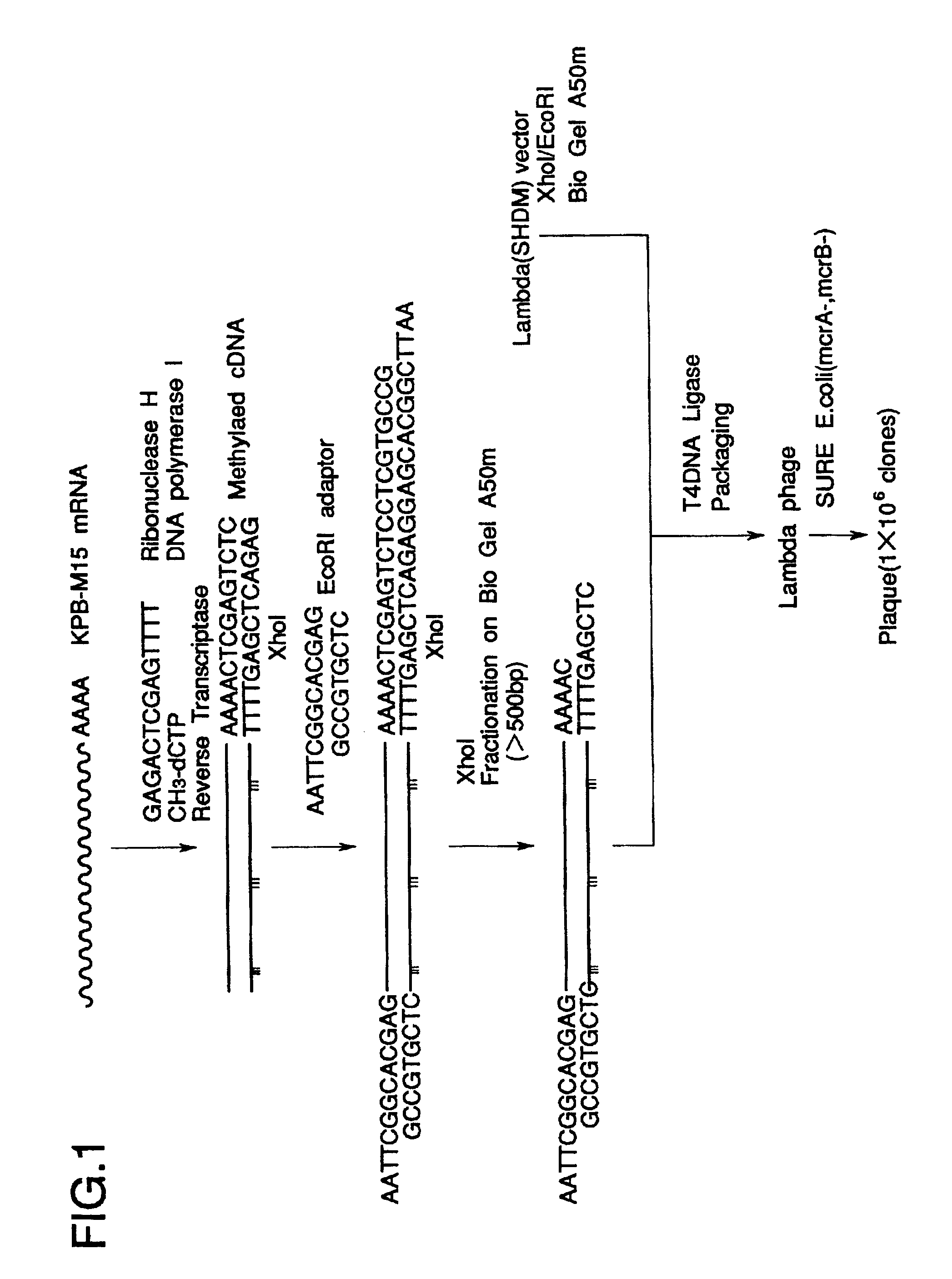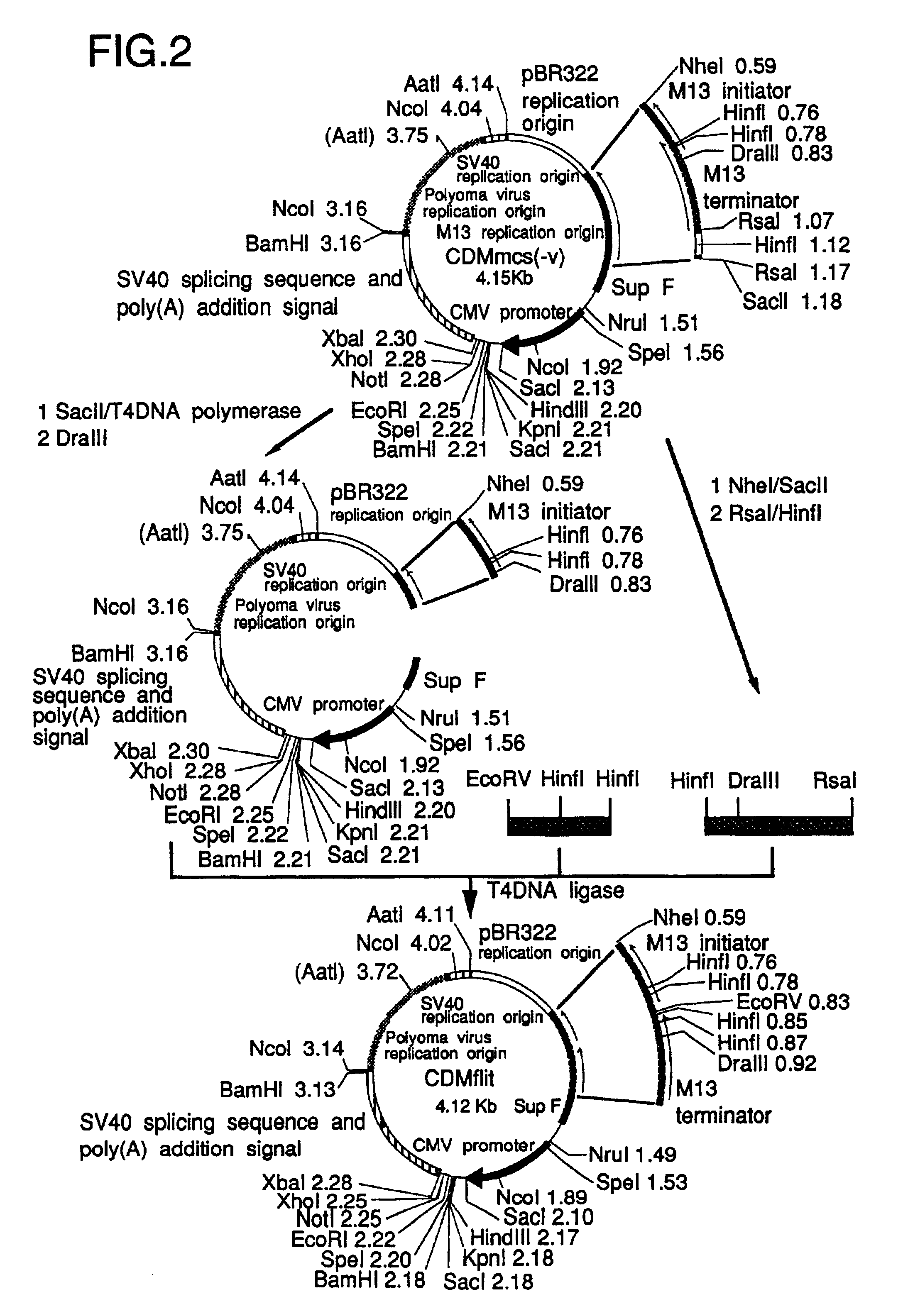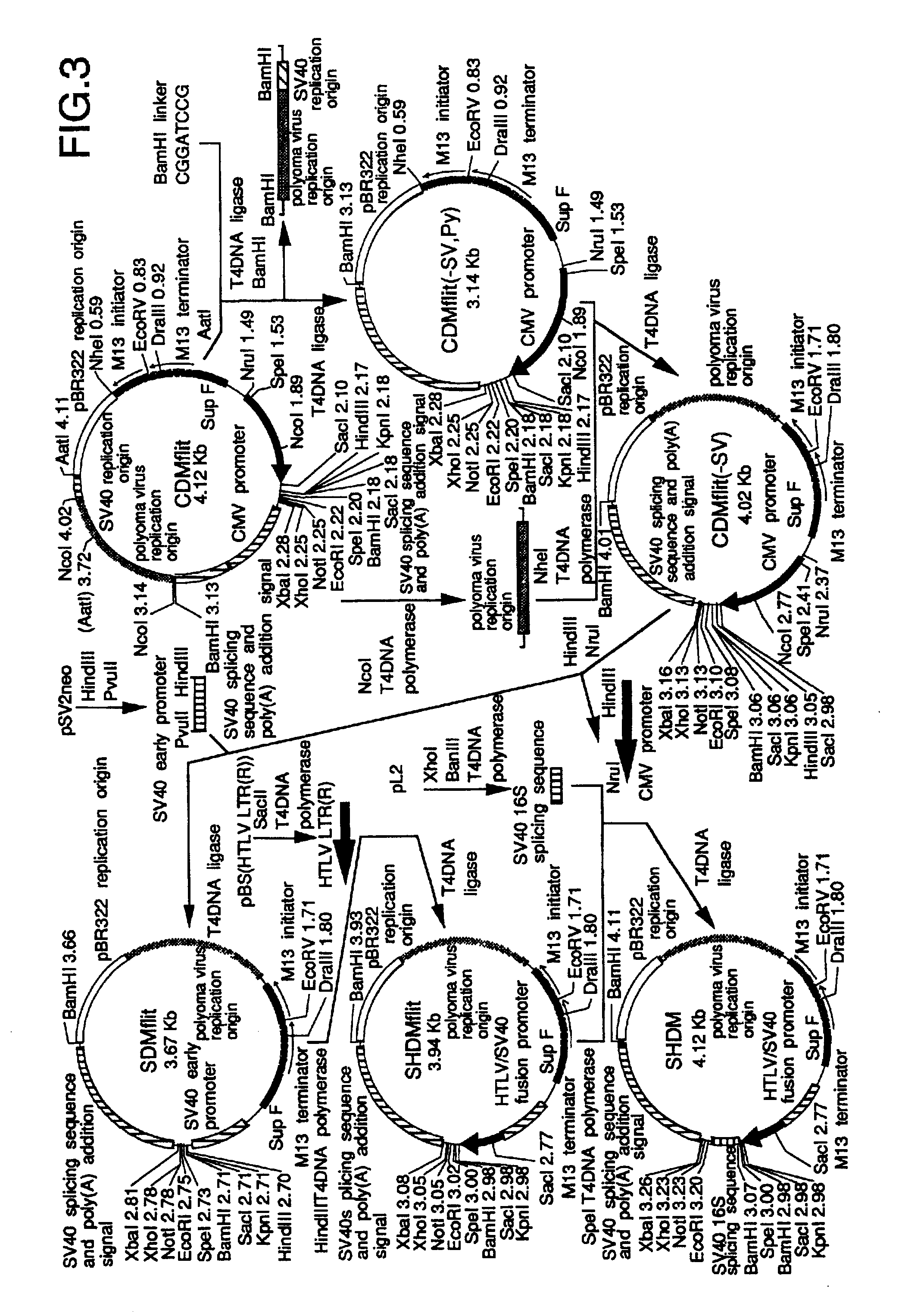Hematopoietic stem cell growth factor (SCGF)
- Summary
- Abstract
- Description
- Claims
- Application Information
AI Technical Summary
Benefits of technology
Problems solved by technology
Method used
Image
Examples
example 1
Preparation of mRNA from KPB-M15 Cells
Total RNA was prepared from KPB-M15 cells known to produce the polypeptide of the invention, according to the method of Chomczynski and Sacchi (Anal. Biochem. 162, 156-159, 1987).
KPB-M15 cells were lyzed in 25 mM sodium citrate buffer containing 4 M guanidine thiocyanate, 0.5% Sarkosyl and 0.1 M 2-mercaptoethanol (2-ME) (Solution D). The lysates were phenol / chloroform-extracted under acidic conditions followed by precipitation of the mRNA in the aqueous phase with 2-propanol.
Oligotex dT30 beads (Takara, Ohtsu) were mixed with the total RNA solution at 37.degree. C. under NaCl of over 0.5 M. After wash, mRNA bound to the beads was dissociated with 10 mM Tris-HCl buffer (pH 7.5) (TE) plus 1 mM EDTA.
example 2
Synthesis of cDNA from KPB-M15 Cells (KPB-M15 cDNA)
cDNA synthesis was carried out using ZAP-cDNA Synthesis Kit (Stratagene, Calif., La Jolla).
Nucleic acid mixture containing Me-dCTP, a linker primer (FIG. 1) and a reverse transcriptase (RTase) was reacted at 37.degree. C. with mRNA solution from KPB-M15 cells to synthesize the first strand DNA (1st Str). RNAse H and DNA polymerase I (DNApolyI) were reacted at 16.degree. C. with the mixture to synthesize the second strand DNA (2nd Str). The ends of the synthesized cDNA were made blunt with T4 DNA polymerase, ligated to EcoRI adaptor (FIG. 1) at 8.degree. C. with T4 DNA ligase, and phosphorylated with T4 polynucleotide kinase (PNKinase). The cDNA was digested at 37.degree. C. with XhoI, and size-fractionated by BioGel A50m column (BioRad, Calif., Hercules) equilibrated with TE plus 0.1 M NaCl (STE) to collect cDNA of over 500 base pairs (bp).
example 3
Construction of .lambda. CDM and .lambda. SHDM Vectors
.lambda. CDM and .lambda. SHDM vectors were constructed by insertion of linearized CDMflit and SHDM plasmids, the former of which was produced from CDM8 (Seed, Nature 329, 840-842, 1987), into .lambda. phage vectors, respectively.
.lambda. CDM was constructed as follows; the stuffer XbaI-HindIII region of CDM8 was replaced with a PRC / CMV polylinker (Invitrogen, Calif., San Diego) to develop construct CDMmcs. The EcoRV-EcoRI region in the polylinker was replaced with a pBS (Stratagene) polylinker SmaI-EcoRI fragment, leading to the EcoRV site-eliminated CDMmcs(-v). (SEQ ID NO: 3). The synthetic DNA (SEQ ID NO: 3), which has a part of the overlapping region between the M13 initiator and terminator (FIG. 2) and an EcoRV site at its '5 end, was ligated with the HinfI-RsaI fragment to the DraIII-SacII region of CDMmcs(-v) to develop CDMflit; the EcoRV site was located between M13 initiator and terminator. On the other hand, the .lambda...
PUM
| Property | Measurement | Unit |
|---|---|---|
| Atomic weight | aaaaa | aaaaa |
| Volume | aaaaa | aaaaa |
| Volume | aaaaa | aaaaa |
Abstract
Description
Claims
Application Information
 Login to View More
Login to View More - R&D
- Intellectual Property
- Life Sciences
- Materials
- Tech Scout
- Unparalleled Data Quality
- Higher Quality Content
- 60% Fewer Hallucinations
Browse by: Latest US Patents, China's latest patents, Technical Efficacy Thesaurus, Application Domain, Technology Topic, Popular Technical Reports.
© 2025 PatSnap. All rights reserved.Legal|Privacy policy|Modern Slavery Act Transparency Statement|Sitemap|About US| Contact US: help@patsnap.com



